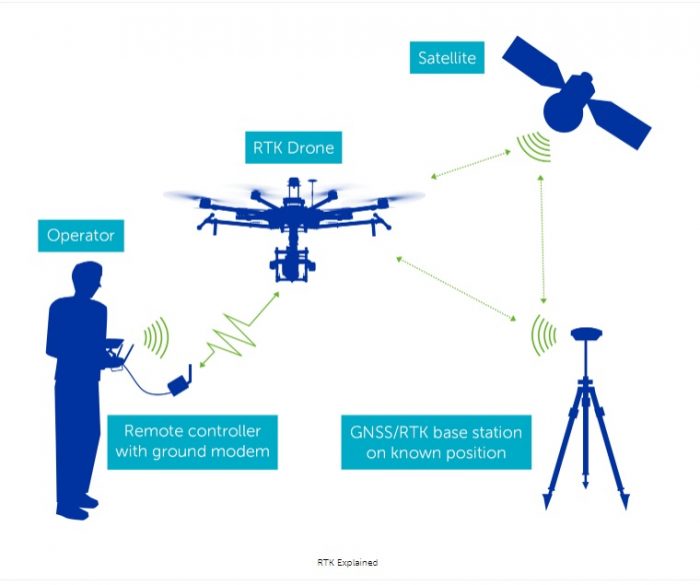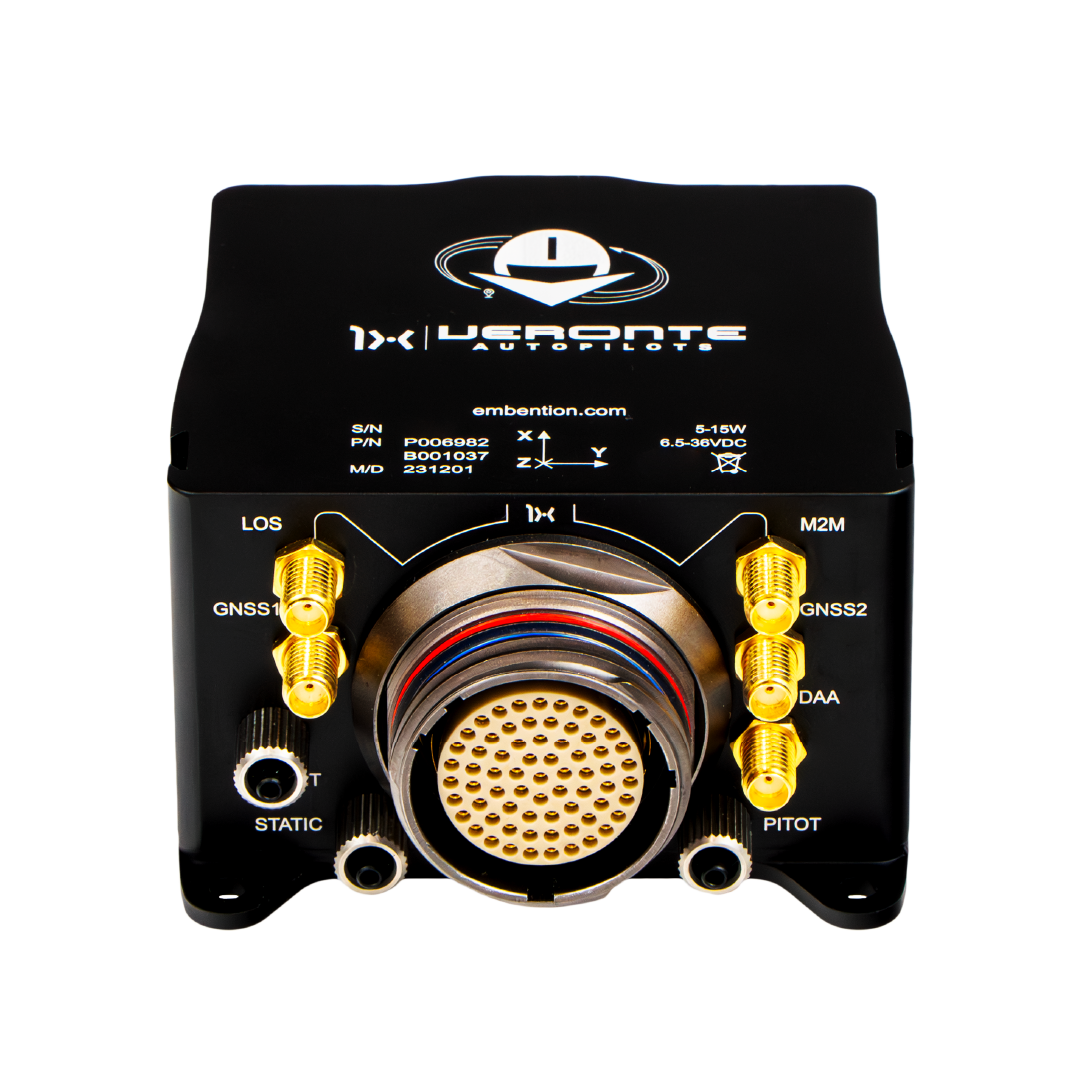SparkNavi Drone Flight Controller and GNSS/INS Made in Taiwan: Advancement for Professional UAVs
SparkNavi Drone Flight Controller and GNSS/INS Made in Taiwan: Advancement for Professional UAVs
Blog Article
Discovering the Duty of Drone Flight Controllers in Enhancing Flight Security and Navigating Performance
The advancement of drone modern technology has actually significantly raised the significance of flight controllers, which function as the brain of these airborne lorries. By integrating real-time information from a range of sensing units, trip controllers improve trip security and navigation effectiveness, guaranteeing that drones can run smoothly even in intricate atmospheres. This discussion will certainly explore the crucial elements that add to these renovations, in addition to the implications for the future of autonomous flight. What advancements lie ahead that could even more change the abilities of drone trip controllers?

Understanding Trip Controllers
Trip controllers are integral components in the performance of drones, serving as the minds that stabilize and manage trip operations. These innovative tools process data from numerous sensing units, including accelerometers, gyroscopes, and GPS, to make certain that the drone keeps its designated trip course. The trip controller interprets this data and implements commands based upon pre-defined formulas, allowing the drone to respond to environmental adjustments, such as wind or challenges.
The key function of a flight controller is to keep security during trip. It achieves this by making real-time adjustments to the drone's motors and control surfaces, ensuring equilibrium and control. Furthermore, contemporary flight controllers integrate innovative functions such as waypoint navigating, enabling automated trip courses and improved operational efficiency.
Recognizing the design of trip controllers is important for both experts and enthusiasts. They commonly include a microcontroller, firmware, and numerous interfaces for sensing unit input and interaction. As technology breakthroughs, flight controllers have ended up being extra qualified and small, integrating fabricated intelligence to enhance decision-making procedures and adapt to complex trip circumstances. This development signifies a crucial development in the drone industry, leading the method for extra sophisticated applications and much safer procedures.
Key Components of Flight Stability
Achieving optimal flight stability in drones counts on a number of key parts that function in concert to ensure smooth and controlled operations. Central to this stability is the flight controller itself, which refines information from different sensors to preserve the preferred trip mindset. This consists of accelerometers and gyroscopes that determine activity and positioning, enabling real-time adjustments to the drone's position.
One more critical element is the digital rate controllers (ESCs), which regulate the power provided to the motors. By carefully tuning motor speeds in action to trip controller commands, ESCs assist keep balance and combat disruptions triggered by wind or abrupt activities.
Furthermore, the design of the drone's framework plays a critical function in flight security. A well-structured frame minimizes vibrations and improves the overall wind resistant profile, adding to smoother trip characteristics. Ultimately, the assimilation of sophisticated formulas within the flight controller aids in predictive adjustments, ensuring a receptive and versatile flight experience.
With each other, these parts form a cohesive system that boosts a drone's security, enabling precise handling and improved efficiency in various trip conditions.
Navigating Performance Methods
Effectiveness in navigating is necessary for optimizing drone procedures, specifically in complex settings. Reliable navigating techniques boost the ability of drones to pass through challenging terrains and stay clear of barriers, thereby boosting operational performance and safety.
One famous method is the implementation of sophisticated general practitioners and inertial measurement devices (IMUs) that give precise area monitoring and alignment information. These modern technologies enable drones to calculate optimum trip courses in real-time, thinking about various elements such as wind problems and possible barriers.
Another method entails making use of formulas for path preparation and optimization. Algorithms such as A * and Dijkstra's formula can be released to identify one of the most effective course while lessening power usage and trip time. Integrating device discovering versions can enable drones to adaptively find out from their atmospheres, boosting navigating capabilities via experience.

Effect On Autonomous Drones
The assimilation of innovative navigating methods has actually greatly changed the capacities of self-governing drones, enabling them to run with higher freedom and accuracy. SparkNavi drone flight controller and GNSS/INS made in taiwan. These improvements are largely connected to innovative trip controllers that make use of real-time information processing and sensing unit combination, permitting drones to navigate intricate environments effortlessly
The effect on autonomous drones extends past plain navigation; it includes enhanced obstacle avoidance, boosted security throughout dynamic problems, and enhanced objective integrity. By leveraging algorithms that incorporate artificial intelligence and top article expert system, drones can adjust to changing conditions, making notified choices that enhance their trip paths while reducing risks.
Additionally, the execution of robust trip controllers has actually helped with the execution of intricate tasks, such as airborne assessments, shipment solutions, and farming monitoring, with minimal human treatment. This ability not only enhances operations yet additionally lowers human mistake, thus improving total safety and security.
Consequently, the functional extent of independent drones has broadened substantially, making them vital devices in different sectors. Their ability to execute successfully in diverse situations emphasizes the important function that advanced trip controllers play in shaping the future of unmanned aerial systems.
Future Trends in Flight Control
Frequently, advancements in flight control innovation are positioned to redefine the landscape of drone operations in the coming years. Arising patterns show a substantial change towards improved expert system (AI) learn the facts here now integration, making it possible for flight controllers to process real-time data a lot more effectively. This development will promote better decision-making capabilities, allowing drones to adjust to vibrant ecological problems autonomously.
Additionally, the execution of artificial intelligence formulas is expected to enhance predictive upkeep, thereby minimizing downtime and prolonging the lifecycle of drone parts. This positive technique to upkeep will be critical as drone applications expand throughout different markets, from agriculture to logistics.

.jpg)
Lastly, innovations in protected interaction methods will resolve security and regulative issues, guaranteeing that drones can run flawlessly in stuffed airspaces (SparkNavi drone flight controller and GNSS/INS made in taiwan). Collectively, these fads aim towards a future where flight control systems are not just smarter and a lot more effective yet also qualified of running safely in a progressively incorporated airspace
Final Thought
To conclude, drone flight controllers are important to enhancing trip stability and navigation Get More Info effectiveness through the sophisticated handling of sensing unit data. By preserving ideal flight mindsets and employing innovative formulas for course optimization and barrier avoidance, these controllers dramatically add to the autonomy and functional security of drones. As innovation remains to advance, additionally advancements in flight control systems are expected, assuring improved efficiency and increased abilities in the realm of unmanned aerial lorries.
By incorporating real-time information from a variety of sensors, flight controllers boost trip security and navigation efficiency, guaranteeing that drones can run smoothly also in complicated atmospheres.Flight controllers are integral components in the performance of drones, serving as the minds that stabilize and manage flight operations. In addition, modern trip controllers incorporate sophisticated features such as waypoint navigation, permitting for automated trip paths and enhanced operational effectiveness.
Central to this stability is the flight controller itself, which refines data from various sensing units to maintain the preferred trip mindset.In conclusion, drone trip controllers are important to enhancing flight security and navigating effectiveness via the advanced processing of sensing unit data.
Report this page